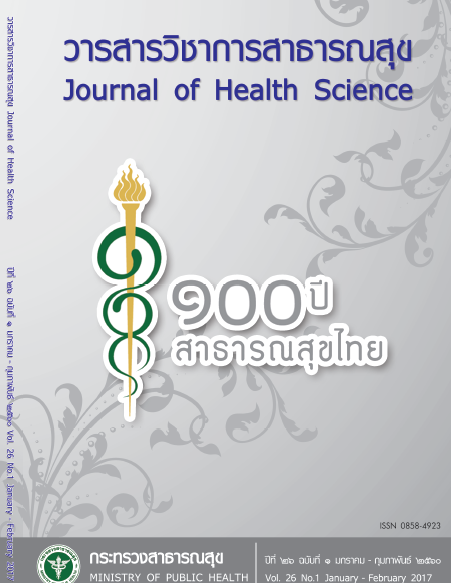Situation of Area-Based Emergency Medical System Management: a Case of Excellence Center Develop-ment
Keywords:
emergency medical system, excellence centerAbstract
This qualitative study aimed to review the situation of area-based emergency medical system management under the excellence center mechanism. It was conducted in nine centers purposively selected from seven provinces in various regions of Thailand, using tools for synthesizing lessons learned, analyz-ing management models, making policy recommendations, collecting data from relevant documents, in-depth interviews with center chiefs, and focus group discussions with relevant staff, based on WHO’s guidelines and six building blocks of the health system. The results showed that: (1) the leadership did not result from directives, but from structural and power relationships among lateral health-care units, based on leader-partner, mentor-learner, or senior-junior relations, using the senior’s knowledge-based direc-tion; (2) the system governance was evident in partners’ relationships with a joint thinking process and action; (3) the service model had linkages from the points of incidents to definitive care units, aiming for seamless care provision; (4) a real time information system was in place with systematic and regular feedback; (5) the funding was obtained from multiple sources depending on the capacity of local health-care facilities; and (6) the workforce regularly attended organized learning sessions within or together with other health-care facilities, using their own databases, and innovations freely created with the support from each area’s administrator, enhancing such personnel to take initiative and further develop their capacity and performance. It is thus suggested that five steps be adopted for driving the system further, namely, (a) partner mobilization, (b) brainstorming, (c) analysis, (d) plan revision, and (e) implementation. In conclusion, the National Institute for Emergency Medicine needs to promote suitable interactions among the partners within the province or region, beginning from the individuals or organizations with strong leadership and knowledge as well as funding from various sources, in utilizing the database, permitting freedom in planning, specifying directions, and managing the plan, in line with the context of each locality. And each provincial public health office should play a more proactive role in this matter.
Downloads
Downloads
Published
How to Cite
Issue
Section
License
Copyright (c) 2017 Journal of Health Science- วารสารวิชาการสาธารณสุข

This work is licensed under a Creative Commons Attribution-NonCommercial-NoDerivatives 4.0 International License.







